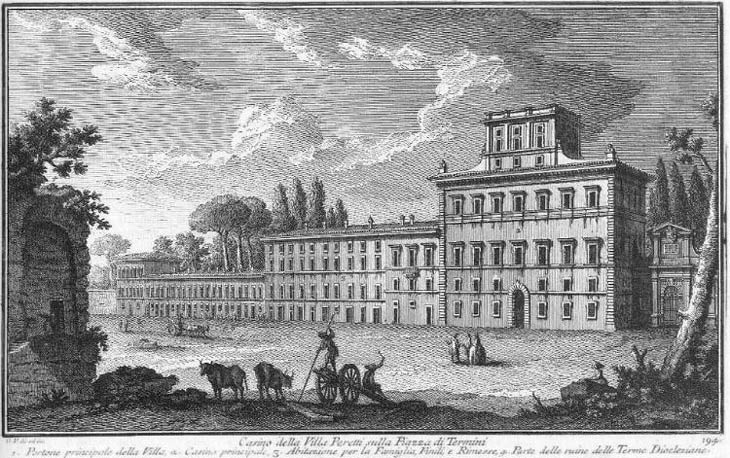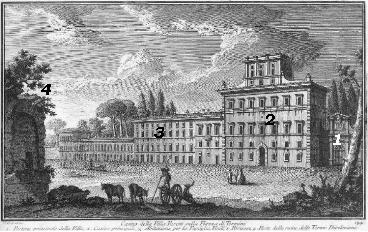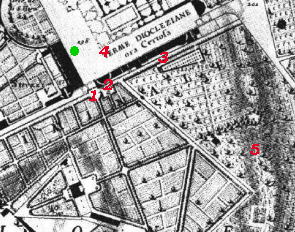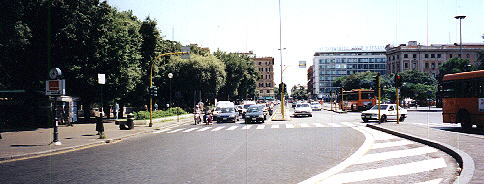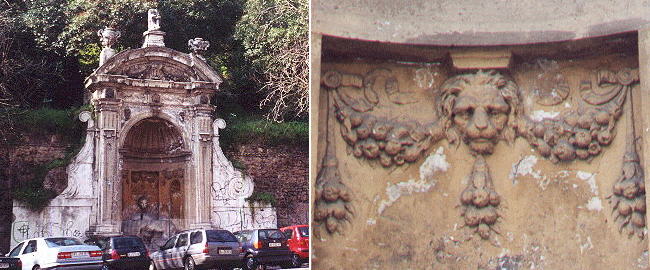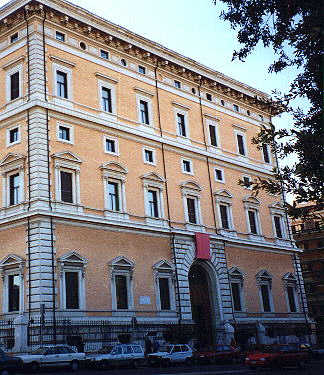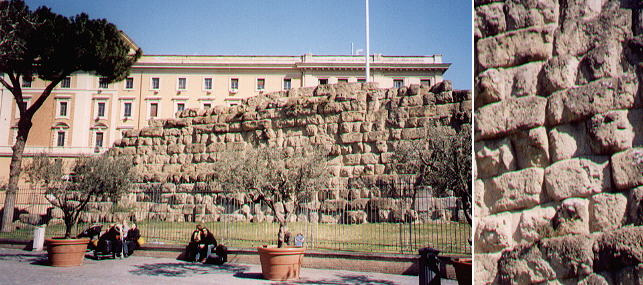  Casino della Villa Peretti sulla Piazza di Termini (Book 10) (Map A3) (Day 2) (View B7) (Rione Monti) In this page:
Sixtus V rebuilt the aqueduct bringing water from the Alban hills
to the northern part of Rome (Acqua Felice) where
he had bought a large estate (Villa Peretti or Villa Montalto) when he
was a cardinal. The plate shows the entrance to Villa Peretti near Piazza
di Termini. In the XVIIIth century the Villa was sold and became known as Villa Negroni.
The view is taken from the green dot in the small 1748 map here below.
In the description below the plate Vasi made reference to: 1) Main entrance;
2) Main Casino; 3) Buildings for the servants, hay-lofts and coach-houses; 4) Ruins of Terme di Diocleziano.
4) is shown in another page. The small map shows also 5) Aggere Serviano.
The need to provide the new Kingdom of Italy with a "modern" capital
led after 1870 to developing a plan for expanding the city inherited by
the Popes and which was limited by the Tiber on one side and the Pincio,
Quirinal, Esquiline, Palatine hills on the other side.
Of the many decorations of Villa Peretti a fountain still survives although relocated on the other side of Rome, below S. Pietro in Montorio. In the detail the lion and the pears of Sixtus V.
One of the new buildings erected on the site of the old ones shows some resemblance to the original villa (the entrance, the number of windows) and it now hosts a section of Museo Nazionale Romano. In 1882 an obelisk was found near S. Ignazio and it became part of a monument erected in 1887 in the gardens near the Termini Railway Station (to see all the obelisks of Rome click here).
According to the tradition, in the VIth century B.C. King Servius Tullius, the sixth king of Rome, built a wall to protect the town which had
largely expanded beyond the Palatine. The so called Servian Wall is thought today to have been built at a later stage after
the Gauls sacked Rome in 378 B.C.. However the walls near Termini Railway Station were most likely built by Servius Tullius,
because they show a building technique typical of the Etruscan towns and based on the alternate positioning of tufa blocks of a
parallelepiped shape. A ditch immediately outside the walls increased their strength.
Next plate in Book 10: Casino della Villa Altieri
Go
to |
All images © 1999 - 2003 by Roberto Piperno. Write to romapip@quipo.it
